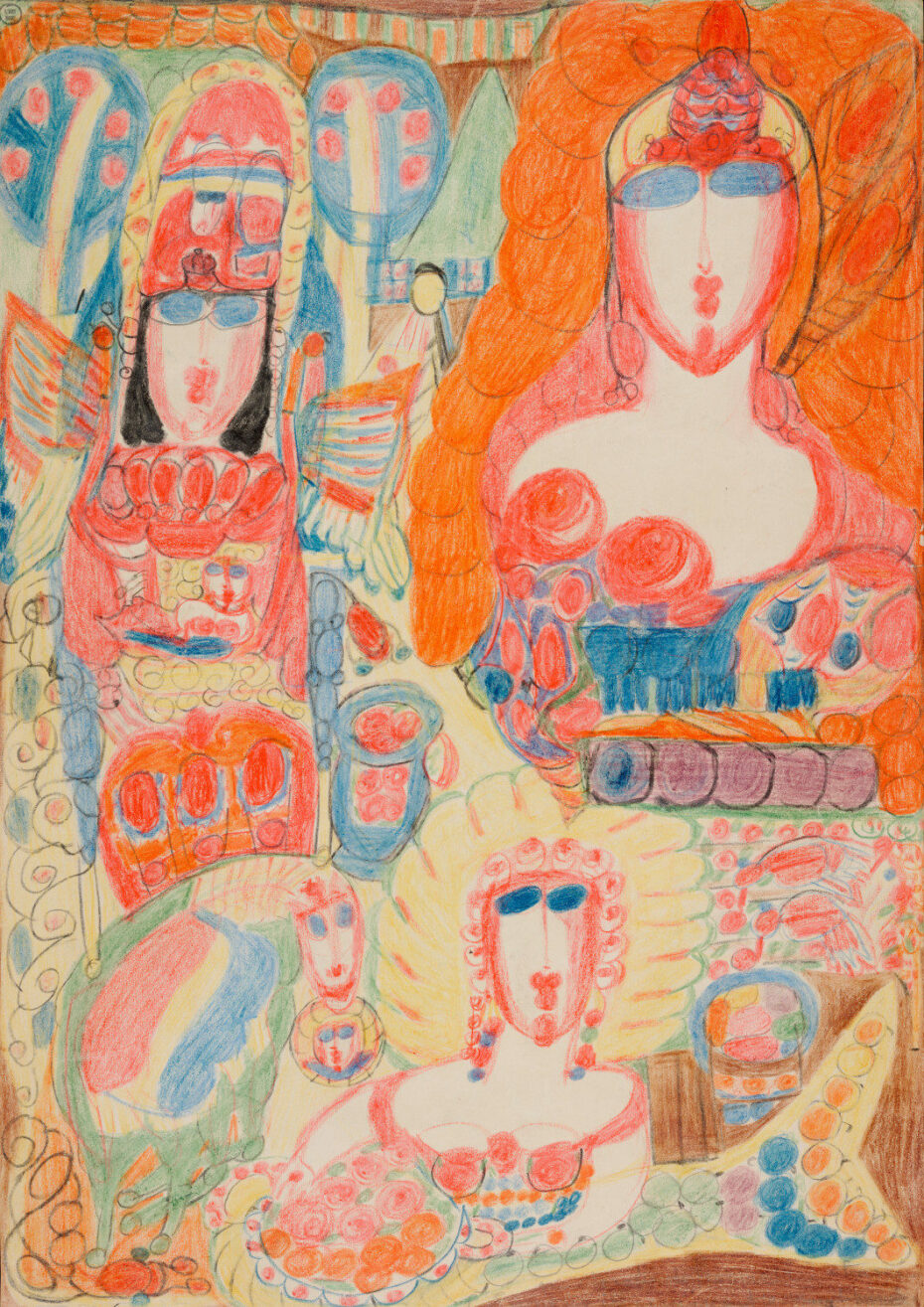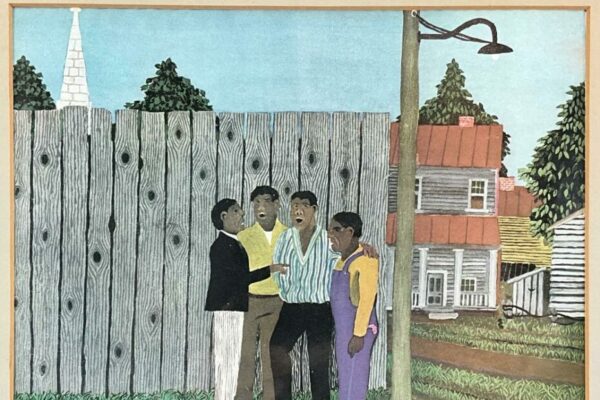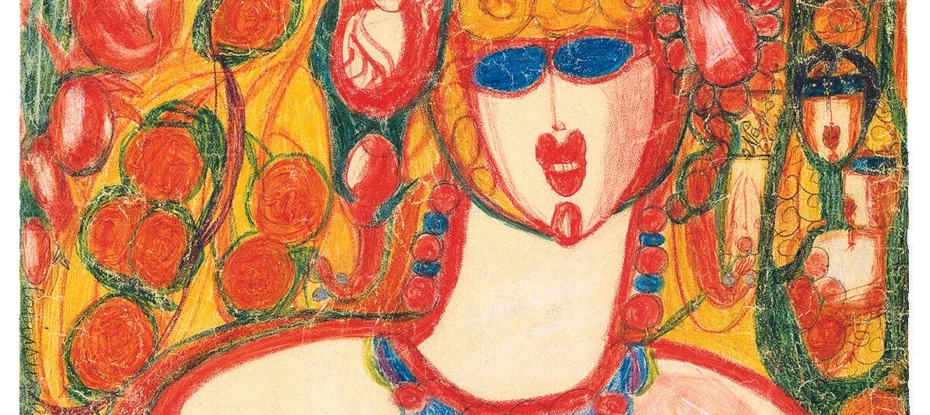
Aloïse Corbaz lived a life outside the margins. Institutionalised, alone, and without any training, her deeply individual artworks were both a product of and a comment on her struggles with mental illness. Within the walls of a Swiss asylum in early 20th century, Corbaz was extremely prolific. She used unconventional materials like toothpaste, flower petals, and scraps of paper to create her vibrant, intricate works, and her art features a fantastical blend of romanticism and surrealism, often depicting regal figures and grandiose love scenes. Aloïse Corbaz has our “artist of the week” spotlight.
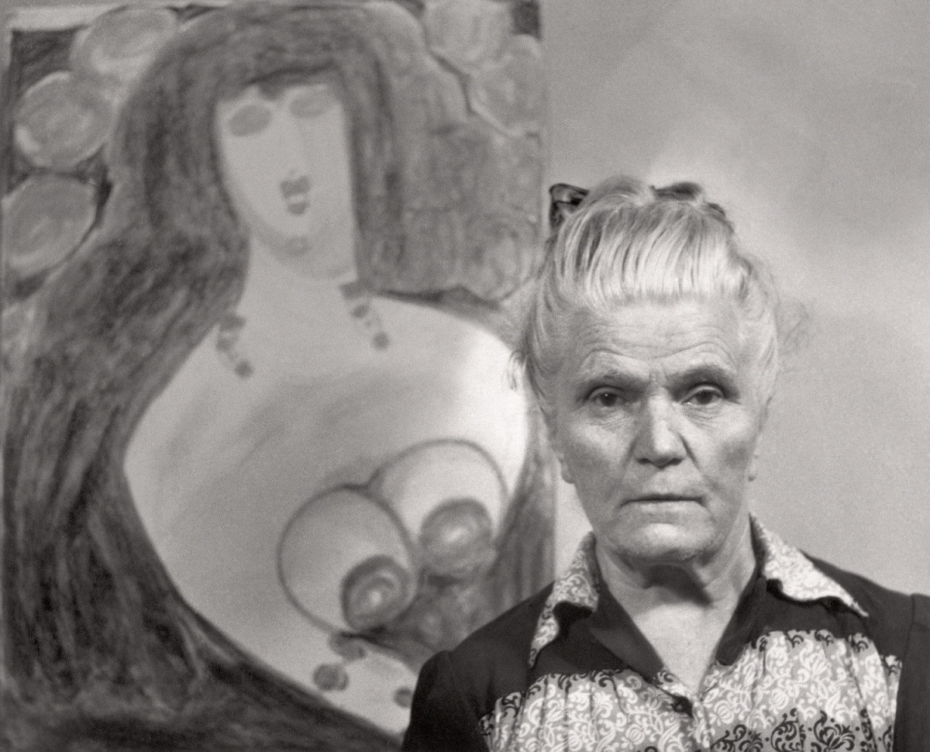
Born in 1886 in Lausanne, Switzerland, Corbaz came from a large family. She was drawn to the arts early on, and especially loved opera. Her dream was to become a singer, but as a young woman she found work as a dressmaker, then as a teacher.
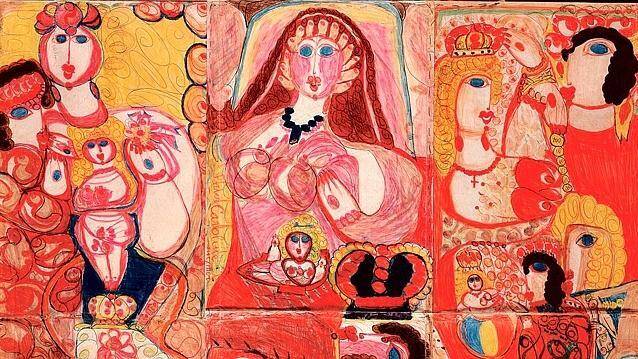
In her early adulthood, she worked as a governess in Germany, in the court of the Kaiser Wilhelm II. There, in a pivotal moment in her life, she became infatuated with the Kaiser. Her unrequited love became an all-consuming obsession.
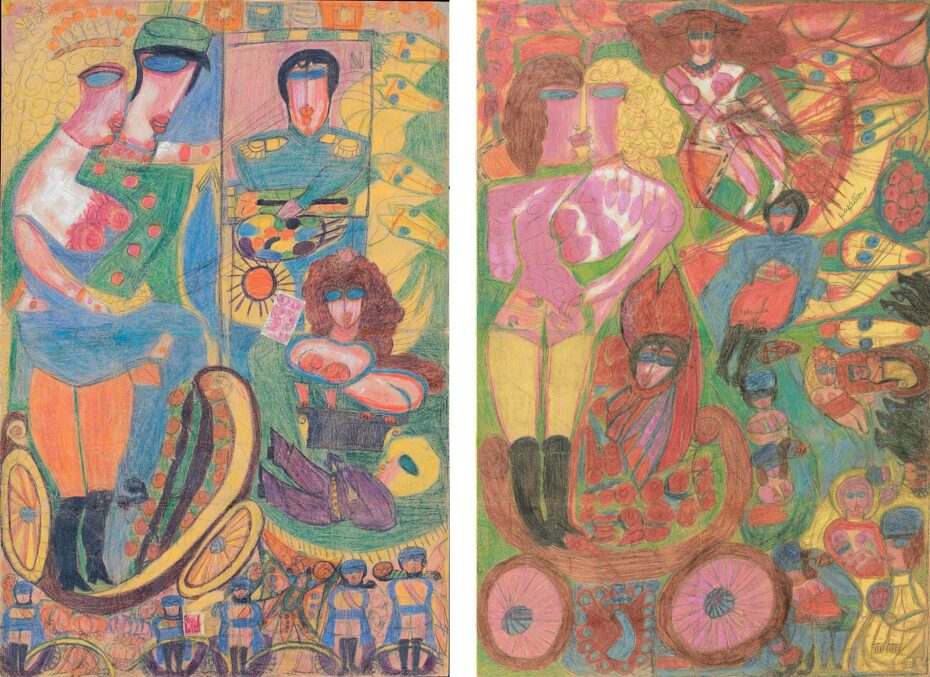
Aloïse’s intense fixation on the German Emperor led to a breakdown, culminating in her diagnosis of schizophrenia in 1918. She was institutionalized in a psychiatric hospital, a place that would become both her sanctuary and her studio for the next several decades. Aloïse began to channel her emotions and fantasies into writing and drawing.
These images, inspired by her love for the Kaiser, reflect her inner world, a place where beauty, romance, and vivid colors reign supreme. The same figures reappear again and again across her work. Corbaz’s drawings often impart a feeling of chaos or hyperactivity. Typically she would fill up the entire paper, an example of horror vacui, a fancy term for “fear of empty space”.
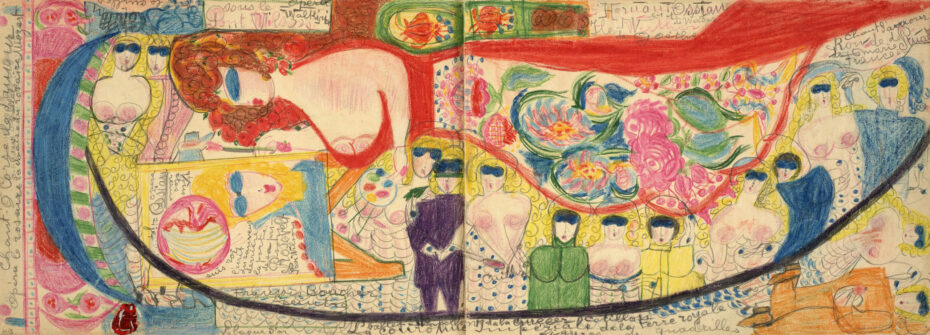
Within the asylum where she would be placed for the remainder of her life, her art was acknowledged and preserved by Dr. Hans Steck, with the help of his student, Jacqueline Porret-Forel. Madame Porret-Forel then introduced Jean Dubuffet to the artist and her work. Everything changed when Aloïse’s art caught the attention of Dubuffet, the French artist and collector who created the art brut (raw art) movement itself. Dubuffet, along with the surrealist André Breton, recognized the unpolished brilliance of Aloïse’s creations and included her work in his collection, bringing her well-deserved recognition.
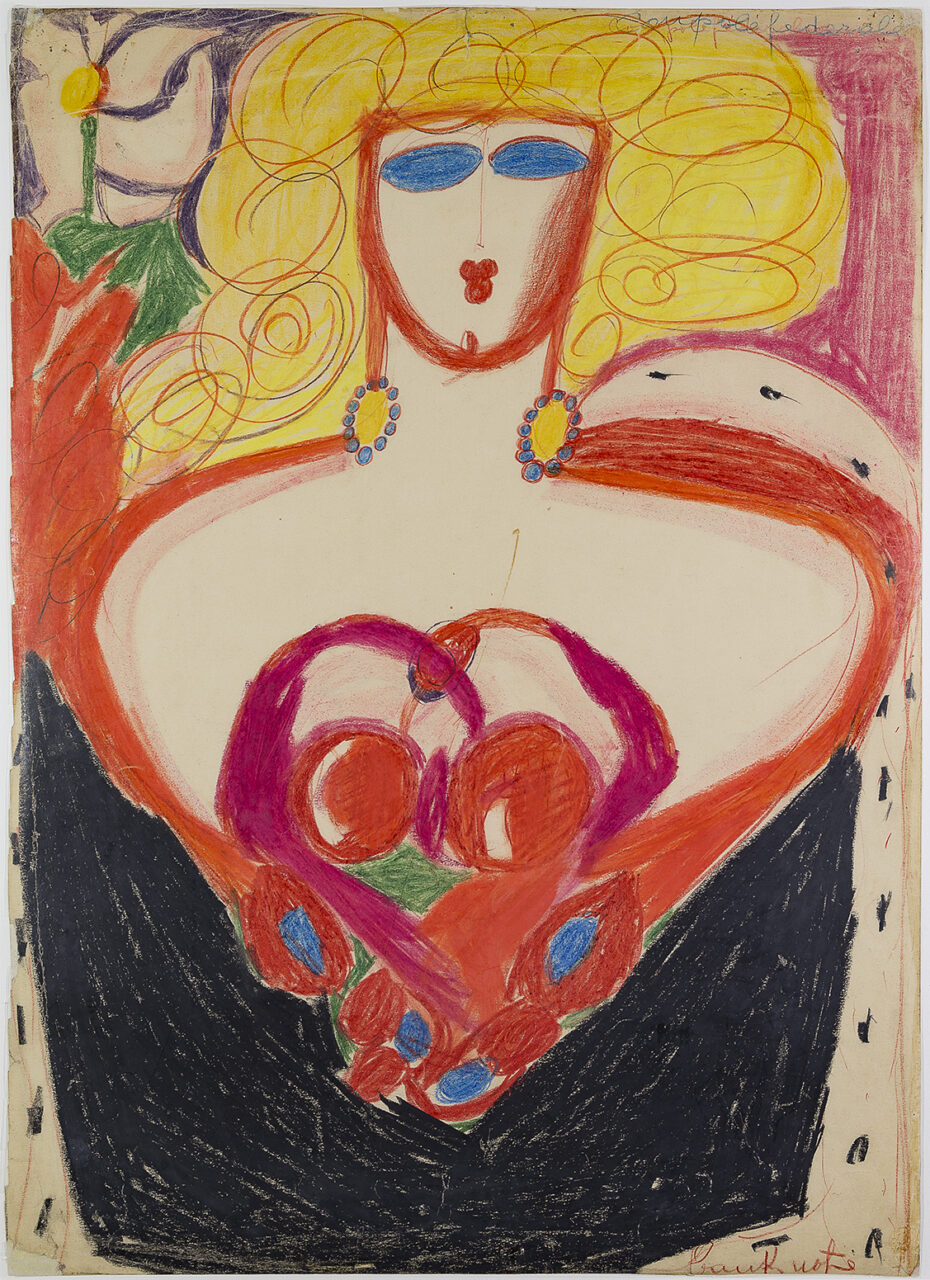
Although Corbaz said little to Dubuffet, he speculated that she was not truly mad. Instead, she found a unique space within her “madness” to develop a sense of self, enabling her to create a remarkable visual universe distinct from the cultural world.
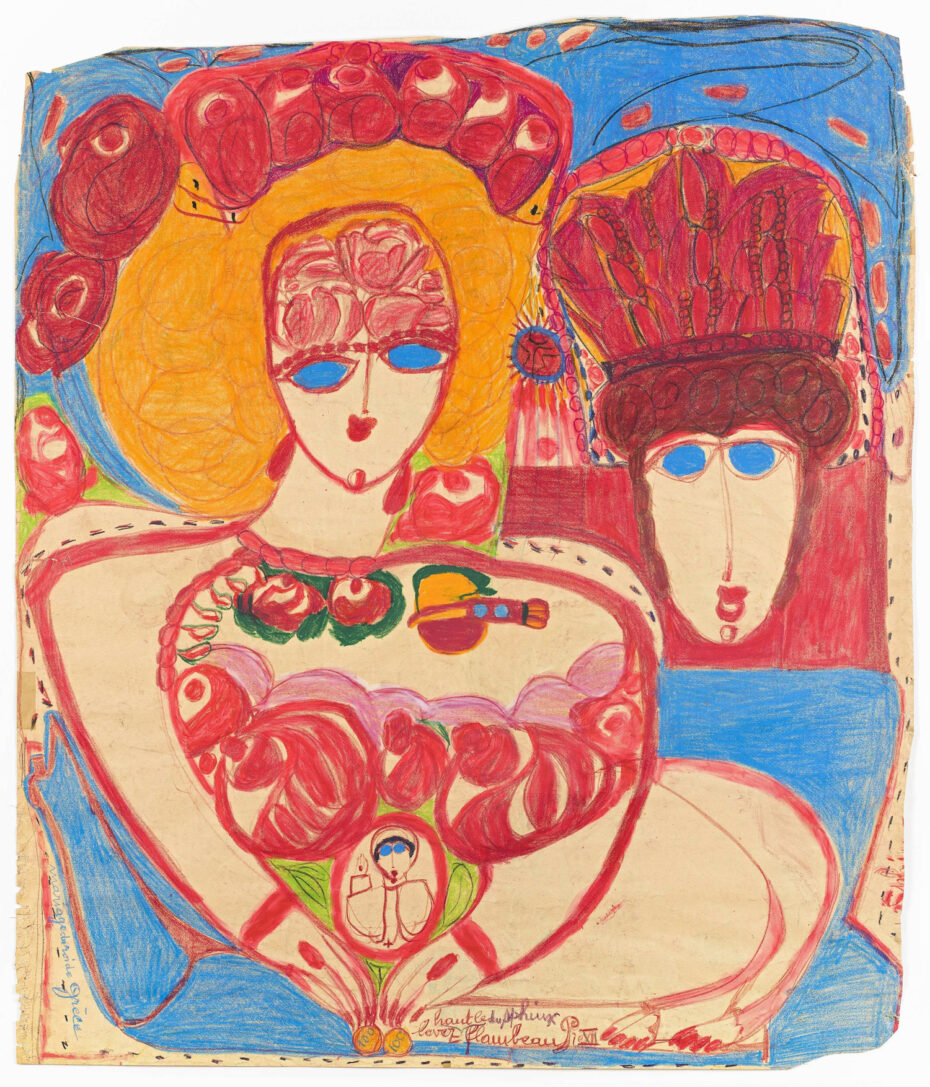
Today, Corbaz’s works are found in esteemed collections around the world, including the Collection de l’Art Brut in Lausanne, Switzerland. Her art continues to captivate audiences with its emotional depth and imaginative prowess. She stands as a beacon of how creativity can thrive even in the most restrictive environments, offering an example of art as an act of resilience.
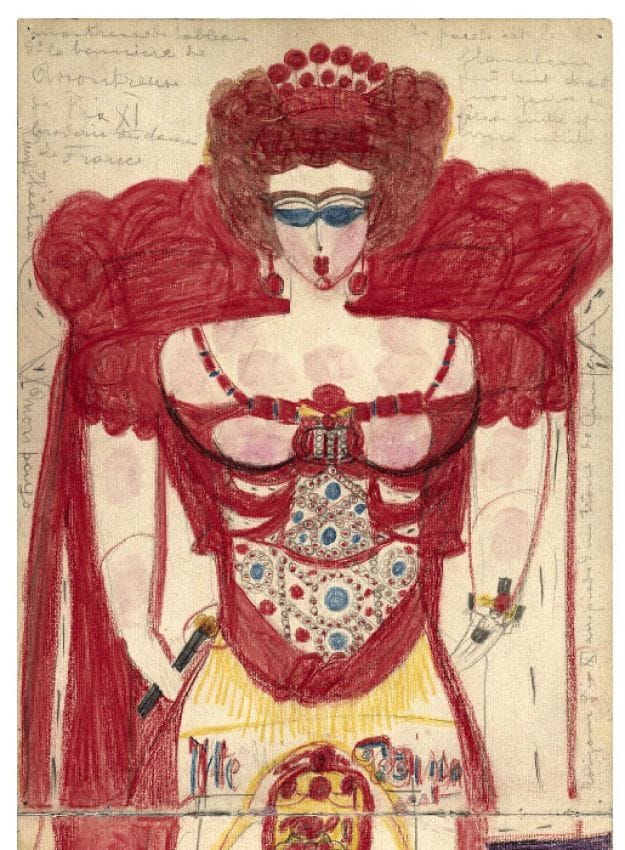
In a world that often imposes limits on who can be an artist, Aloïse Corbaz’s life and work are a powerful testament to the fact that true art knows no boundaries. Her vibrant canvases, filled with passion and intensity, invite us to explore the depths of human emotion and the boundless potential of the imagination.
